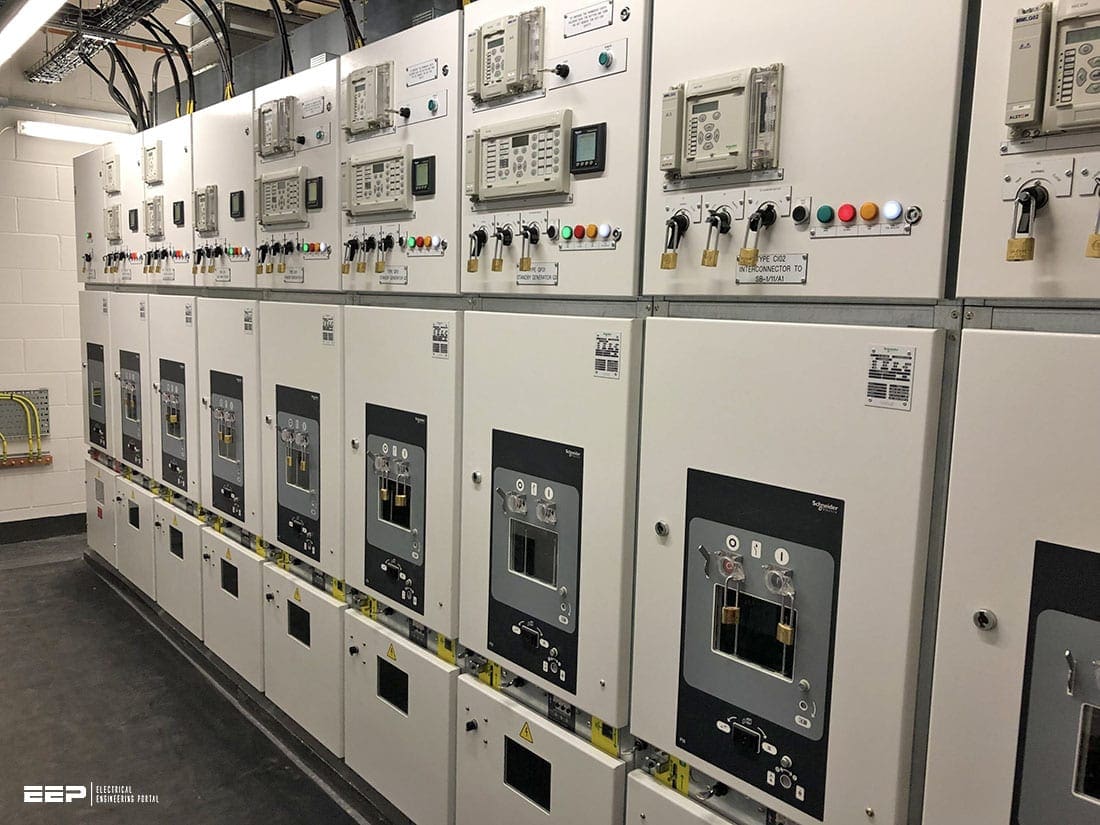Network fault situations
There are two types of faults in the network. First, we have symmetrical faults. These faults are easy to calculate because network can be translated to a simple single-phase equivalent circuit. Symmetrical fault is a three-phase short circuit. Secondly, we have asymmetrical faults. These faults are more common than symmetrical faults.

The most common fault causing asymmetry is an earth fault. When faults are asymmetrical, network can no longer be transformed to a single-phase equivalent circuit and the whole network has to be treated as a three-phase circuit in its original form.
Symmetrical faults
Symmetrical fault is a very rare situation. As mentioned before, a three-phase short circuit is a symmetrical fault. Although this type of fault is very rare, it has to be taken care of, because it’s the most severe accident the power delivery system will face.
One of the common three-phase short circuits is generator fault. The fatality is caused by very big fault current. Big current is produced, because limiting inductances are very small. The fault starts from the subtransient current, which leads to the steady-state fault current values. Fault detection and clearing has to be very fast in order to limit disturbances to the power system.
Further reading:
Symmetrical components theoretical and real-world examples for relay engineers
Asymmetrical faults
More often occurring fault is asymmetrical fault. When fault is asymmetrical, fault currents and voltages are not equal at different phases. There are two main types of asymmetrical faults: shunt type and series type faults. Shunt type fault is a connection between two network elements. Series type means broken connection at the conductor.
The most common asymmetrical fault is an earth fault. Asymmetrical fault indicates itself easily and from the phase values it is easy to acquire what type of asymmetrical fault it is.
The studies of the network’s asymmetrical faults are important because of the network protection. Studies are usually carried out by the method of the symmetrical components.
Basic theory and data of earth fault
Earth fault is a situation where non-earthed, live part of the network is connected to the earth trough relatively low impedance. It can be a permanent fault, which requires the personnel to rectify the fault situation, or it can be a transient fault, which can be managed via automatically controlled protection system.
Four basic types can classify earth fault types. These types are shown in the figure 1.
The simplest type is single-phase to earth fault as shown in point 1. This is most commonly caused by wire drop. Second alternative is a 2-phase earth short circuit as shown in point 2. In this fault type, two different phases are short circuited together with the earth. Third alternative is a double earth fault, where two different phases are simultaneously connected to the earth at the different locations.
This alternative is shown in point 3. Fourth fault type is cut wire, where load side is connected to the earth as shown in point 4.

Most common reasons to earth faults are, for example, arcs during lighting, trees, which have fallen to conductors; and animals, which are moving near live wires. It is usual that during the earth fault there are also some other faults.
In some cases, earth faults may lead up to more complex situations like 2-phase earth faults. Although the number of earth faults is large, they are usually temporary. Today’s relay technology has also improved the situation.
When modern protection relays have artificial intelligence, they normally are able to reclose network after the arc is cleared.
Basic measurements at fault situation
Basic measurements during the faults are carried out with voltage or current transformers. Also combination is possible. Transformers are used, because the values are too high to be measured directly. Both magnitude and and values are normally compared to known healthy state values. If any changes occur, needed operations are carried out.
An earth fault situation at the compensated network is always challenging for feeder protection. When determining values for protection, many variables have to be known. Length of cable and type of cable are some issues to be mentioned.
In the earth fault calculations the network is simplified to a partial network, which contains only crucial components. This makes calculations and logical deduction much easier.
| Title: | Earth fault protection functions for long cable feeders in compensated networks – Atte Hietalahti at University Of Vaasa, Faculty Of Technology, Electrical And Energy Engineering |
| Format: | |
| Size: | 1.9 MB |
| Pages: | 94 |
| Download: | Right here | Video Courses | Membership | Download Updates |


